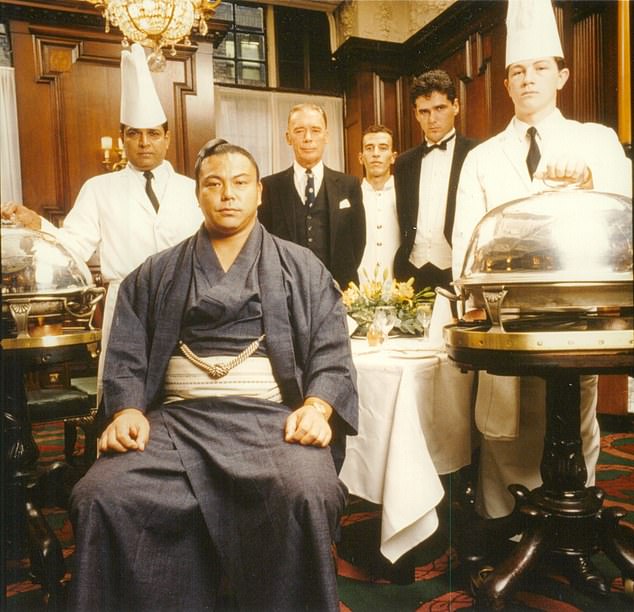After more than three decades, the mesmerizing rituals of Japan’s ancient sumo wrestling have made their way back to London — and fittingly, it’s once again taking over the iconic Royal Albert Hall.
The event marks only the second time in history that a Grand Sumo tournament has been held outside Japan, reviving a spectacle that first captivated audiences in the British capital 34 years ago.
Back in 1991, it was the vision of the late Vere Harmsworth, the second Viscount Rothermere and father of today’s Daily Mail chairman, Lord Rothermere, that brought this extraordinary tradition beyond Japan’s shores.
Now, the sport returns to the same grand venue for five electrifying nights, bringing with it the discipline, dignity, and drama that define sumo.
When Sumo Met London Society
The last time London hosted this sacred spectacle, the city witnessed a cultural moment unlike any other.
I had been dispatched to Tokyo that year by Viscount Rothermere himself to immerse in the world of sumo — not only to cover the story but also to persuade one of the sport’s all-time greats, Chiyonofuji, to come out of retirement and take part in the first international tournament.
To earn his trust, I had to live, quite literally, like a sumo wrestler — joining them in their legendary meals of rice and hearty stew, a tradition that fuels their immense strength.
Eventually, Chiyonofuji agreed to travel to London, and in celebration, we dined together at Simpson’s in The Strand, a historic London establishment famed for its generous portions of meat and its ties to British chess.
A Feast Fit for a Champion
That lunch became the stuff of legend. For over 25 years, a photograph from that day adorned the wooden walls of Simpson’s — Chiyonofuji in his regal robes, surrounded by silver serving trolleys, tucking into what could only be described as a feast for kings.
He didn’t limit himself to a single roast. He sampled everything — beef, lamb, pork, venison, turkey, and even the formidable steak and kidney pudding that once defined English dining.
And yet, at 120 kilos, Chiyonofuji was considered one of the lighter competitors in his sport, weighing only slightly more than boxing greats George Foreman and Lennox Lewis at their peaks.
Sumo’s Modern Giants
Fast forward to today, and the wrestlers stepping into the sacred dohyo (ring) are even larger, averaging an astonishing 150 kilos.
The modern sumo athlete is a mountain of strength — but back in his day, Chiyonofuji dominated through something far more refined than sheer size.
Known as “The Wolf” for his intelligence and agility, he relied on lightning-fast reflexes and sharp technique to win over 850 of his more than 1,000 professional matches.
Even toward the end of his career, fans were willing to pay as much as £300 just to watch him in action — a testament to his enduring legend.
Today, tickets for the Royal Albert Hall tournament have skyrocketed to as much as £2,000, proving that the fascination with sumo’s raw power and spiritual grace remains as strong as ever.
Tradition Meets Modern Spectacle
As London once again welcomes the giants of the dohyo, it’s hard not to feel a sense of nostalgia.
The return of Grand Sumo to the Royal Albert Hall isn’t just a sporting event — it’s a bridge between cultures, a reminder of how ancient traditions can still captivate a modern audience.
For many, the echoes of that first historic tournament still linger.
And for those stepping inside the Albert Hall this week, the sight of these colossal athletes bowing, stomping, and grappling in perfect harmony is more than a contest — it’s living art.
Share on Facebook «||» Share on Twitter «||» Share on Reddit «||» Share on LinkedIn